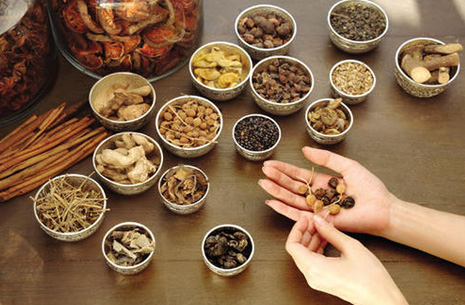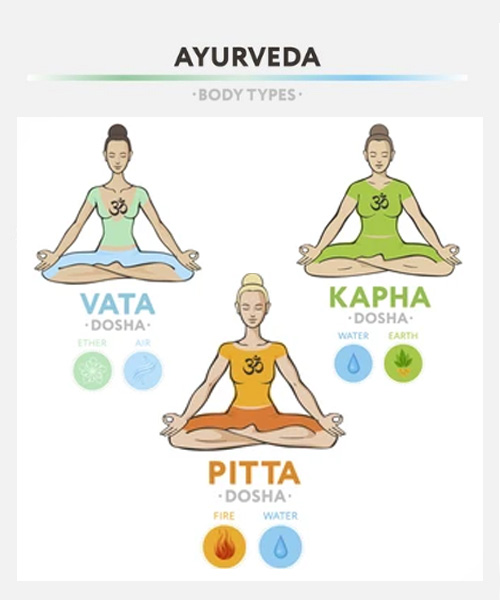Principles Of Ayurveda

The Ancient Science of Life
Dosha = Related Elements
Vata = Air and Space
Pitta = Fire and Water
Kapha = Water and Earth
VATA :
Vata governs breathing, blinking of the eyelids, movements in the muscles and tissues, pulsations in the heart, all expansion and contraction. Vata also governs such feelings and emotions as freshness, nervousness, fear, anxiety, pain, tremors, and spasms. The primary seat or location of the Vata in the body is the colon. It also resides in the hips, thighs, ears, bones, large intestine, pelvic cavity, and skin. It is related to the touch sensation. If the body develops an excess ofVata, it will accumulate in these areas.
PITTA :
Pitta governs digestion, absorption, assimilation, nutrition, metabolism, body temperature, and skin coloration, the luster of the eyes, intelligence, and understanding. Psychologically, Pitta arouses anger, hate, and jealousy. The small intestine, stomach, sweat glands, blood, fat, eyes, and skin are the seats of Pitta.
kapha :
Kapha lubricates the joints; provides moisture to the skin; helps to heal wounds; fills the spaces in the body; gives biological strength, vigor and stability; supports memory retention; gives energy to the heart and lungs.z. and maintains immunity. Kapha is present in the chest, throat, head, sinuses, nose, mouth, stomach, joints, cytoplasm, plasma, and in the liquid secretions of the body such as mucus.
Psychologically, Kapha is responsible for the emotions of attachment, greed, and longstanding envy. It is also expressed in tendencies toward calmness, forgiveness, and love. The chest is the seat of Kapha.

A Complete Way of Life.
Ayurveda views illness as caused by an imbalance in a person’s physical or mental constitution and therefore seeks to gently bring a person’s body and mind back into a healthy balance
Balanced Tridosha means a Healthy Person :
Within each person the doshas are continually interacting with one another and with doshas in all of nature.
This explains why people can have much in common but also has an endless variety of individual differences in the way they behave and respond to their environment.
(References: Internet and Ayurvedic books)
